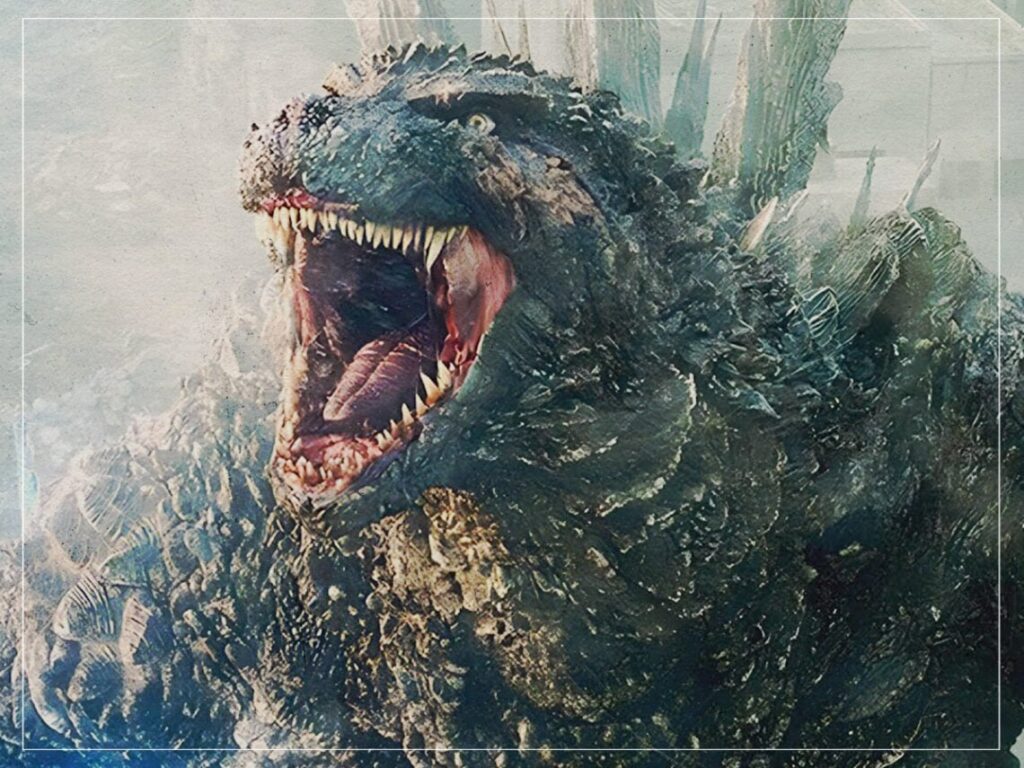‘Godzilla Minus One’ ending explained: Is Godzilla dead?
 Posted On
Posted On
(Credits: Far Out / Toho)
Takashi Yamazaki’s movie Godzilla Minus One has won plaudits for bucking the trend when it comes to action-packed blockbusters with a monster as their protagonist. The Japanese-made film’s emotionally engaging, character-driven story, historically authentic period sets and scenery, and compelling visual effects set it apart from the barrage of superficial budget-breakers Hollywood serves up ad nauseam.
What’s more, the picture was made for a fraction of the price of most monsterrific adventures, reportedly coming in within a $12million budget. Having recouped what it cost ten times over at the cinema, the movie is moving over to the small screen.
Netflix has secured the distribution rights to stream movies everywhere, meaning that anyone who missed its big-screen showings can enjoy it at home. And there’s plenty to enjoy.
Scenes include a stunning sequence in which Godzilla’s spinal plates rise out of its back before it destroys the Tokyo district Ginza with its breath, which effectively mirrors an atomic bomb attack. This scene gives rise to the movie’s central, underlying theme. Godzilla’s attack leads to high radiation levels in the area and the proliferation of the creature’s cells among the population, with lasting effects for those impacted. Just as radiation poisoning continued to affect the populations of Hiroshima and Nagasaki for generations after nuclear bombs were dropped on the cities.
Aside from the film’s focus on the disastrous effects of nuclear warfare, there is its epic climax. The main hero of the story, kamikaze fighter pilot Kōichi Shikishima, flies his plane into Godzilla’s head. It appears the pilot has sacrificed his life, as he was trained to do.
Does the attack kill Godzilla?
With the monster poised to breathe atomic heat rays at a fleet of ships in Sagami Bay, Shikishima crashed into its open mouth. Yet, contrary to his training, he managed to parachute to safety seconds before, thanks to the ejector seat specially installed in his aircraft.
Because Godzilla was in the process of emitting heat rays from its mouth, the plane has pushed them back inwards. Its head explodes from the heat, pressure, and the bombs the plane was carrying. Its body is then gradually ripped apart by the rays forced back down its throat.
What remains of the creature sinks into the bay. But in the very last five-second shot of the movie, a chunk of Godzilla’s blow-up body submerged in the sea starts to swell and mutate to the sound of sinister music. The body is regenerating, as a severely wounded part of the monster’s head had done earlier in the movie.
This ending serves as a powerful and sinister metaphor for the fatal effects of radiation poisoning on the Japanese population after World War Two. The monster of atomic warfare isn’t dead, at least not fully. Unfortunately for the people of Tokyo, their encounter with Godzilla is far from over. It’s only just begun.
[embedded content]


